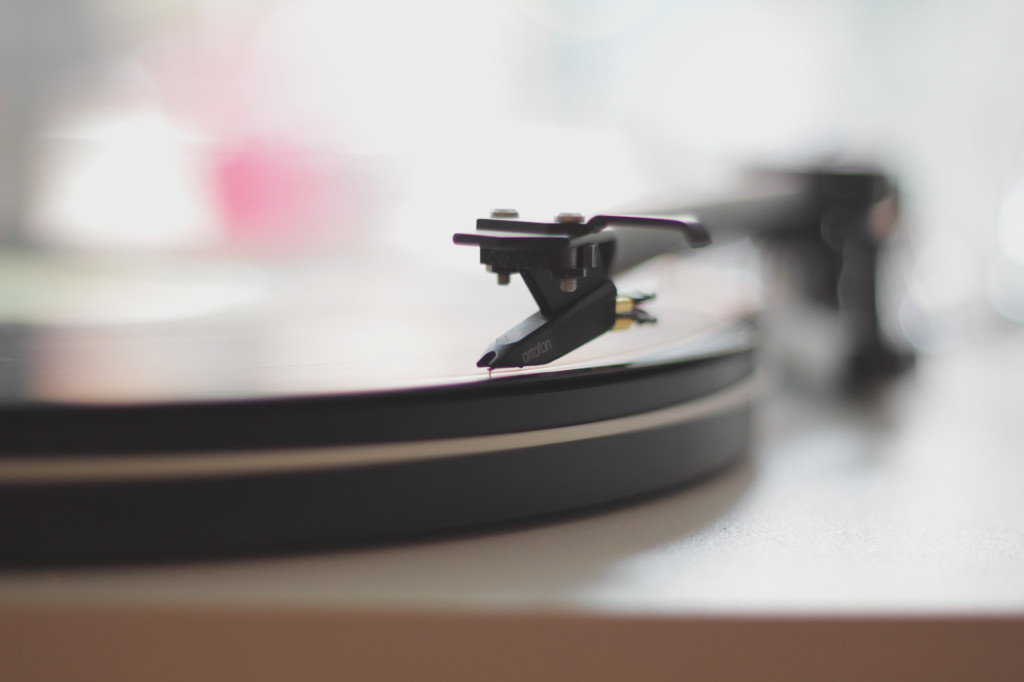Still Spinning, Still Grinning… Vinyl Is Back!
Everything You Need To Know About LP Records
by Anthony Chiarella

I’d forgotten just how great LPs can sound. This point was driven home a couple of years ago when I added a new turntable to my reference system. At the time, I had a $65,000 digital front end, and I thought the sound it produced was about as good as High End could get…until I started spinning records. My analog rig—turntable, arm, cartridge and phono preamp—cost less than half as much, but outperformed my digital stack in almost every respect. Instrumental timbres were richer, with finer harmonic detail, imaging was more three dimensional, and the spaces between the images more palpable, with an airiness and cohesion that was just, well, more lifelike than even the best digital systems. I found this especially true with older, analog masters, but surprisingly, many modern digital transfers actually sounded better on vinyl! (In fairness, I should point out that there are many digital masters which outperform their analog counterparts.) Of course, sound quality alone doesn’t explain the renaissance of the LP record. The tactile pleasures of holding an album cover—an experience that was diminished with the “compact” disc and eliminated completely with streaming—provide a powerful sensory experience. The ability to see and savor album artwork, not to mention lyrics and other “extras” included with many LPs, is sorely missed with CDs and modern digital formats.

The “chore” of removing an LP from its jacket, placing it on the platter, clamping it, cleaning it and carefully lowering the needle into the groove was supposedly one of the reasons why CDs became more popular than LPs; however, for many LP lovers, the ritual of preparing the record for playback actually enhances the experience. And then, there is the hardware. Does any other component in the stereo system equal the beauty or visual artistry of the turntable? Since the time of Edison, record players have been sources of pride and collectability, as well as the focal point of most HiFi systems. (There are several turntables in the Museum of Modern Art’s Permanent Design Collection.) Once you’ve decided to “take the plunge” and join the Analog Renaissance, there are a few vinyl-specific things you have to know. Whether you’re looking to spend a few hundred dollars or a hundred thousand, here’s everything you need to get started… Today’s top ‘tables are true works of art, designed for aesthetic appeal as well as performance. Brinkmann, Kronos, TechDas and many others offer superbly crafted analogue systems, engineered to last for several lifetimes. At lower price points, Rega, Project, EAT and VPI offer entry-level ‘tables whose sound quality approaches state-of-the-art, though without the visual beauty or obsessive craftsmanship, which defines cost-no-object products. Ortofon and Sumiko dominate the market for reasonably-priced phono cartridges, while Kiseki, Koetsu and Lyra continue to develop exquisite cartridges for music lovers who demand “the best” regardless of cost.

Being a high-performance software format, there are two more variables you’ll need to address if you want to extract the highest possible performance from your analog rig. First of all, pay attention to where you mount your turntable and the structure upon which you place it. Record players are vulnerable to “acoustic feedback” (which sounds like a loud, uncontrollable hum) if placed too close to speakers, especially those with prodigious bass; additionally, a turntable placed upon a wobbly floor or rickety stand will be prone to “groove skipping.” Of course, a rigid, high-mass—and expensive!—equipment rack is ideal, but budget and décor often render such purchases impractical. Here are a couple of hints… First, make sure you place the stand upon which your turntable rests near a load-bearing wall (usually one of the exterior walls of the house), as these are the most solid points in the room and the least prone to footfalls and other mechanical interference. A wall-mount shelf—available online for under $150—offers great isolation at a very affordable price. Next, if you’re using a piece of furniture, make sure it’s top surface is level and that it doesn’t wobble. (Small pieces of plastic can be used to “shim” the legs of your furniture to keep it stable and level.) Finally, in order to minimize acoustic feedback, try to position your equipment rack as far from your speakers as possible. We’re almost done!
You’ll also need a few accessories to make your ‘table sing and maintain those precious slabs of vinyl in pristine condition. If your turntable has a detachable phono cable, you may want to consider and upgrade. The signals that are sent through a phono cable are the most delicate in your hifi system, and you would be surprised at the nuances that a high quality cable can bring to sound fidelity. Companies such as Nordost offer a wide range of tonearm cables that run the gamut cost-wise. Another thing to consider is record cleaning machines. Record cleaning machines haven’t changed since vinyl’s “golden age” of the 1960s through ‘80s, when most libraries owned “wet-system” machines that would wash and vacuum their vast collections. The best of these are made by Okki Nokki and VPI, range in price from approximately $500-$1,000, and are recommended for music lovers with large record collections. (Even for small collections, the improvement in sound quality is amazing!) Need to spend less? Spin-Clean makes a dry-system vacuum machine which starts under $80, while AudioQuest and MoFi offer manual brushes starting at under $15! Assuming you’re setting up your own analog rig, a protractor and stylus gauge are essential…and cheap! Add some stylus cleaning fluid and a package of record sleeves (to replace the old sleeves of used records) and you’re ready to discover the pleasures of LP Playback. Enjoy!






